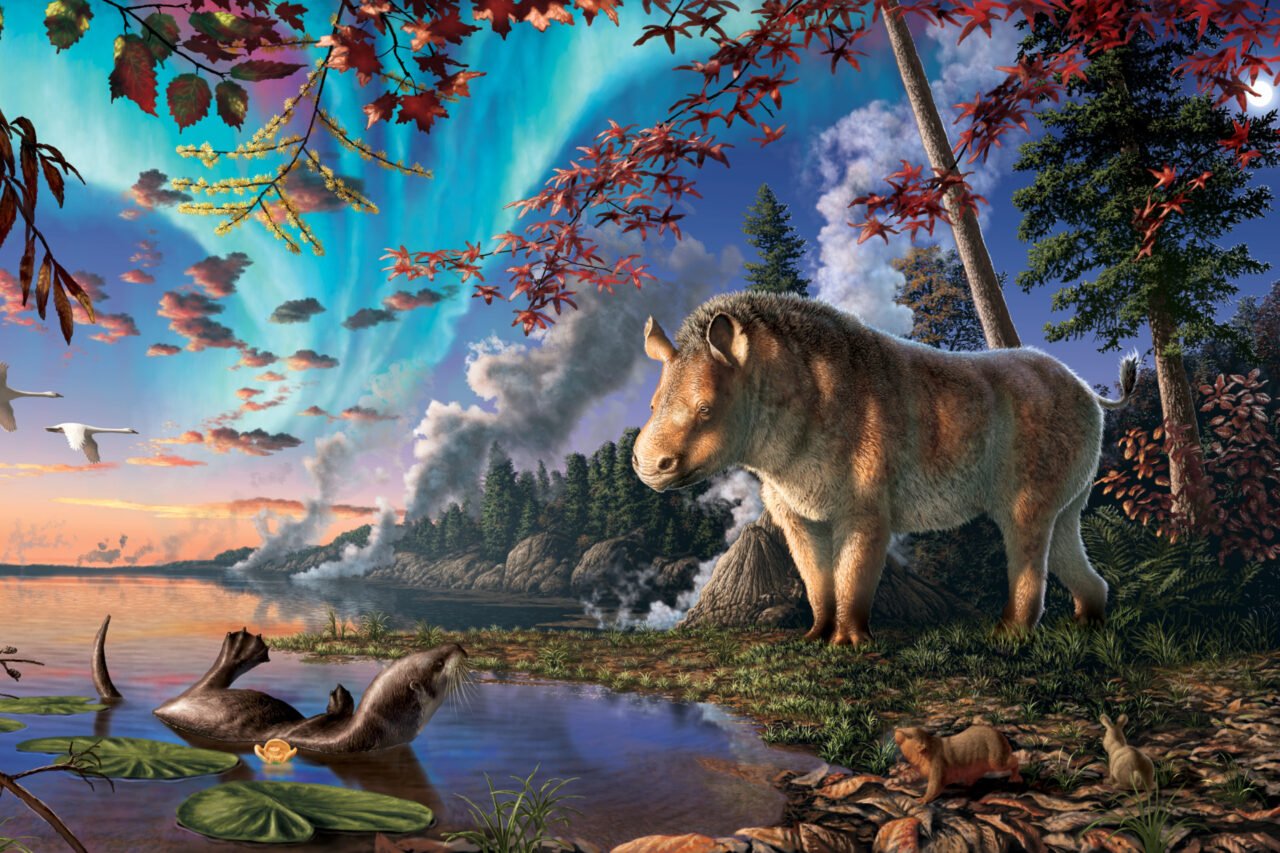Science
Researchers Discover ‘Frosty’ Rhino Species in Canada’s Arctic

A newly identified species of rhino, dubbed the “Arctic Rhino,” has been discovered in Canada’s High Arctic, offering a rare glimpse into the region’s prehistoric fauna. This finding, detailed in a study published in the journal Nature Ecology & Evolution, reveals that the species, named Epiatheracerium itjilik, lived approximately 23 million years ago during the Early Miocene epoch.
The bones of this extinct rhino were unearthed at the Haughton Crater on Devon Island, Nunavut, a site that was once a temperate forest habitat. According to Danielle Fraser, lead author of the study and head of palaeobiology at the Canadian Museum of Nature, the discovery adds significant knowledge to the evolutionary history of rhinos, which today exist in only five species across Africa and Asia.
Unveiling the Past
The Arctic Rhino, named after the Inuktitut word for “frosty,” is notable for being the northernmost known rhino species. The skeletal remains are remarkably well-preserved, with about 75% of the skeleton recovered. Marisa Gilbert, a co-author of the study and paleobiologist at the Canadian Museum of Nature, noted that the preservation quality of the bones is exceptional, as they have only been partially mineralized.
Unlike modern rhinos, E. itjilik did not possess a horn and stood approximately 1 meter tall, comparable in size to a modern muskox. Its environment likely resembled today’s southern Ontario forests, suggesting that it was a browser that fed on leaves, twigs, and shrubs. The researchers emphasize that these characteristics are based on a single set of bones and that further discoveries may provide additional insights.
Evolutionary Insights from the Arctic
In addition to identifying the new species, the research team has revised the family tree of rhinocerotids. Their findings indicate that the Arctic rhino migrated to North America via the now-submerged North Atlantic Land Bridge. This challenges previous theories that suggested the land bridge allowed for species dispersal only until around 56 million years ago.
Fraser remarked on the significance of the discovery, stating, “It’s always exciting and informative to describe a new species. But there is more that comes from the identification of Epiatheracerium itjilik, as our reconstructions of rhino evolution show that the North Atlantic played a much more important role in their evolution than previously thought.”
The ongoing research highlights the Arctic’s potential for yielding new findings that can deepen our understanding of mammalian diversification through time. This discovery not only enriches the narrative of rhino evolution but also underscores the importance of paleontological exploration in remote regions.
-

 Sports2 weeks ago
Sports2 weeks agoSteve Kerr Supports Jonathan Kuminga After Ejection in Preseason Game
-

 Politics2 weeks ago
Politics2 weeks agoDallin H. Oaks Assumes Leadership of Latter-day Saints Church
-

 Business2 weeks ago
Business2 weeks agoTyler Technologies Set to Reveal Q3 2025 Earnings on October 22
-

 Entertainment2 weeks ago
Entertainment2 weeks agoZoe Saldana Advocates for James Cameron’s Avatar Documentary
-

 Science2 weeks ago
Science2 weeks agoChicago’s Viral ‘Rat Hole’ Likely Created by Squirrel, Study Reveals
-

 Lifestyle2 weeks ago
Lifestyle2 weeks agoKelsea Ballerini Launches ‘Burn the Baggage’ Candle with Ranger Station
-

 Lifestyle2 weeks ago
Lifestyle2 weeks agoDua Lipa Celebrates Passing GCSE Spanish During World Tour
-

 Health2 weeks ago
Health2 weeks agoCommunity Unites for Seventh Annual Mental Health Awareness Walk
-

 World2 weeks ago
World2 weeks agoD’Angelo, Iconic R&B Singer, Dies at 51 After Cancer Battle
-

 Business2 weeks ago
Business2 weeks agoMLB Qualifying Offer Jumps to $22.02 Million for 2024
-

 Sports2 weeks ago
Sports2 weeks agoPatriots Dominate Picks as Raiders Fall in Season Opener
-

 Health2 weeks ago
Health2 weeks agoRichard Feldman Urges Ban on Menthol in Cigarettes and Vapes









